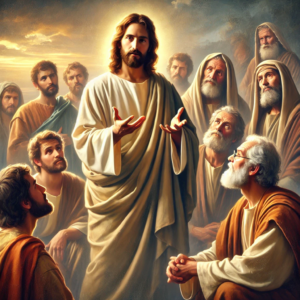Romans 5 is a powerful chapter where Paul unpacks the results of being justified by faith and draws a deep contrast between Adam and Christ. Here’s a summary and breakdown of the key themes:
Summary of Romans 5:
Verses 1–11:
Paul begins by explaining the benefits of justification by faith. Because believers are justified (declared righteous) through faith in Jesus, they now have:
- Peace with God (v.1)
- Access to grace (v.2)
- Hope of the glory of God (v.2)
- Joy even in suffering, knowing it produces endurance, character, and hope (vv.3–4)
- God’s love poured into our hearts through the Holy Spirit (v.5)
- Certainty of salvation, because Christ died for us while we were still sinners (vv.6–8)
- Reconciliation with God through Jesus’ death and life (vv.9–11)
Verses 12–21:
Paul then moves into a comparison between Adam and Christ, often called the “two humanities” section:
- Through Adam’s sin, death entered the world and spread to all humanity (v.12)
- But through Christ’s obedience, grace and life are offered to all (v.15)
- Adam’s sin brought condemnation, but Christ’s righteousness brings justification (v.18)
- Where sin increased, grace increased even more (v.20)
Key Themes:
- Justification by Faith:
Believers are declared righteous not by works, but through faith in Jesus Christ. - Peace and Reconciliation with God:
Because of justification, believers enjoy a new relationship with God marked by peace, access to grace, and reconciliation. - Hope in Suffering:
Suffering is not meaningless. It refines character and anchors hope in God’s love and promises. - God’s Love and Grace:
The cross is the ultimate demonstration of God’s love—Christ died for the ungodly at just the right time. - The Contrast Between Adam and Christ:
- Adam represents humanity’s fall into sin and death.
- Christ represents redemption and the gift of righteousness and life. Paul emphasizes that God’s grace far outweighs sin.
Written with the assistance of ChatGPT
 Acts 1 is foundational to the launch of Christianity, marking the transition from Jesus’ earthly ministry to the apostle’s mission empowered by the Holy Spirit. It establishes the Church’s purpose, leadership, and reliance on divine power.
Acts 1 is foundational to the launch of Christianity, marking the transition from Jesus’ earthly ministry to the apostle’s mission empowered by the Holy Spirit. It establishes the Church’s purpose, leadership, and reliance on divine power.